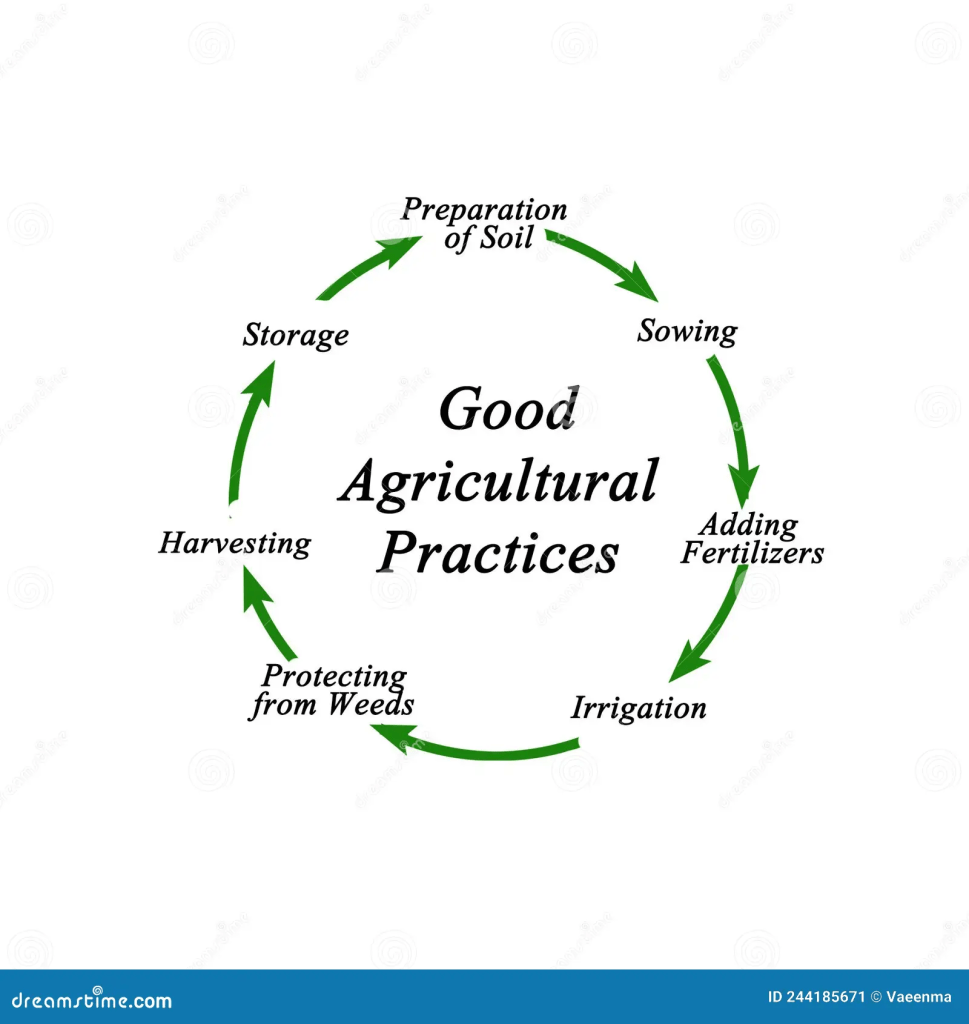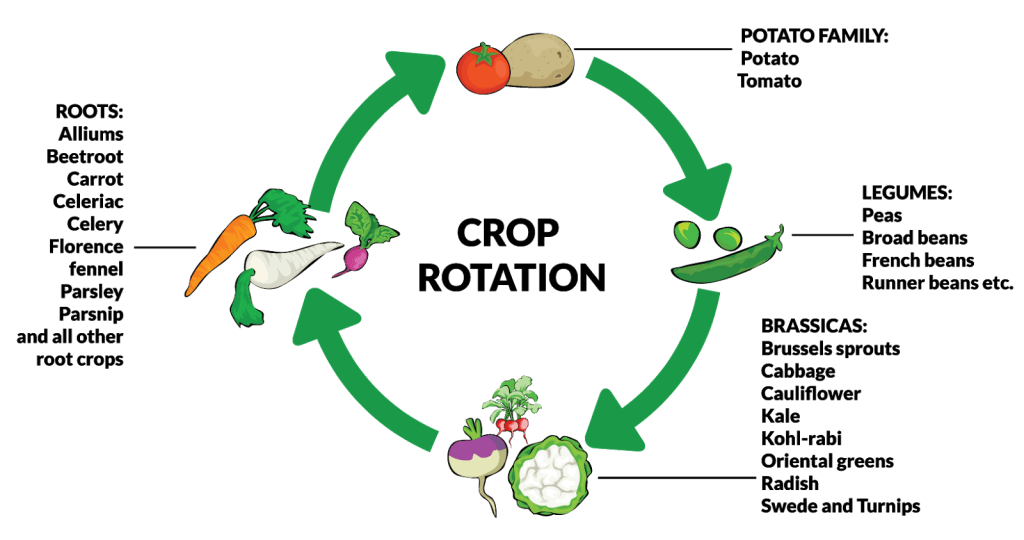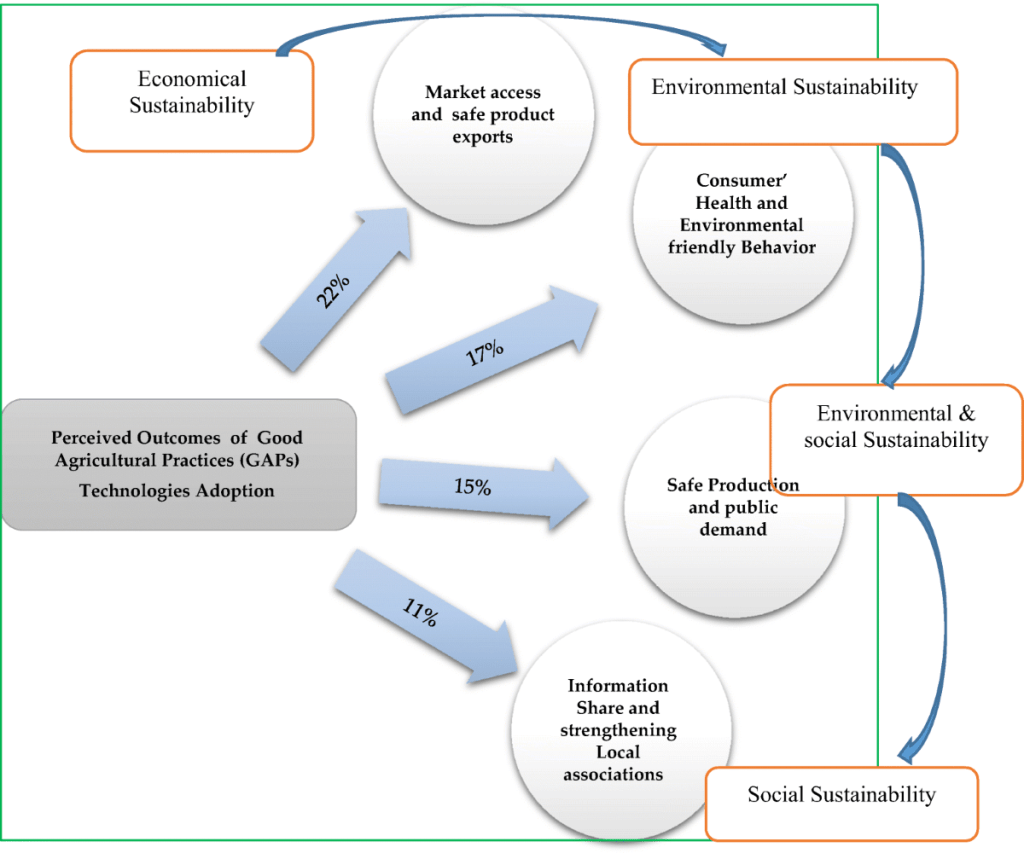
Table of Contents
- Introduction
- What are Good Agricultural Practices (GAP)?
- Key Principles of GAP
- Soil Health and Fertility Management
- Water Management
- Integrated Pest Management (IPM)
- Use of High-Quality Inputs
- Post-Harvest Handling
- GAP and Sustainability
- Agroforestry Practices
- Crop Rotation
- The Importance of GAP for Nigerian Farmers
- How HTSF Global Supports Nigerian Farmers in Adopting GAP
- Conclusion
Introduction
Agriculture is a cornerstone of Nigeria’s economy, employing over 70% of the population, particularly in rural areas. However, the agricultural sector faces numerous challenges, including climate change, soil degradation, and poor farming practices. As part of our mission at HTSF Global, we are dedicated to improving the livelihoods of Nigerian farmers through the adoption of Good Agricultural Practices (GAP) , a comprehensive approach to farming that not only boosts productivity but also promotes environmental sustainability.

GAP guidelines provide farmers with the tools and techniques needed to grow healthy, high-quality produce while reducing their environmental footprint. In this blog post, we will explore the essential aspects of GAP and why it is vital for Nigerian farmers to embrace these practices.
What are Good Agricultural Practices (GAP)?
Good Agricultural Practices (GAP) are a set of farming practices that ensure the production of safe, nutritious, and sustainable food. These practices focus on the optimization of resource use, enhancing soil health, reducing environmental harm, and improving the efficiency of farming operations. GAPs are based on science and technology and are globally recognized standards that are implemented by farmers worldwide.

By following GAP guidelines, farmers can produce crops that meet international safety and quality standards while also fostering long-term agricultural sustainability. These practices encompass all aspects of the farming process, from soil preparation and planting to harvesting and post-harvest handling.
Key Principles of GAP
Soil Health and Fertility Management
Soil is the foundation of every farm, and maintaining its health is crucial for successful farming. GAP emphasizes the importance of soil management techniques such as:
- Crop rotation to break pest cycles and improve soil fertility.
- Organic farming methods like composting and mulching to reduce chemical inputs during soil preparation.
- Soil testing to monitor nutrient levels and avoid overuse of fertilizers.
Healthy soil supports plant growth, enhances water retention, and improves biodiversity, which is essential for sustainable farming in the long run.
Water Management
Water scarcity is a growing concern in many parts of Nigeria, making efficient water management crucial. GAP advocates for:
- Drip irrigation systems that target water directly to the plant roots, minimizing waste.
- Rainwater harvesting to reduce reliance on external water sources.
- Proper irrigation scheduling to ensure crops get the right amount of water without over-irrigating.
Water-efficient techniques help conserve resources and reduce costs while ensuring crops thrive.

Integrated Pest Management (IPM)
Instead of relying solely on harmful chemical pesticides, GAP encourages farmers to use an integrated approach to pest control. This includes:
- Biological control methods such as introducing natural predators of pests.
- Cultural practices like crop diversification and intercropping.
- Mechanical controls such as traps or physical barriers to protect crops.
IPM reduces pesticide use, minimizes environmental impact, and maintains biodiversity, promoting a healthy farm ecosystem.
Use of High-Quality Inputs
Using high-quality seeds, fertilizers, and tools is essential to achieving good yields and ensuring that crops are resilient to pests, diseases, and climate variations. GAP encourages:
- Certified seeds that are disease-resistant and suited to local climates.
- Balanced fertilization that meets the nutritional needs of crops.
- Proper tools and machinery that enhance efficiency and reduce labor costs.
High-quality inputs lead to healthier crops and higher yields, improving farmers’ profitability.
Post-Harvest Handling
Post-harvest practices are critical to preventing loss and maintaining the quality of produce. GAP guidelines include:
- Proper harvesting techniques that prevent physical damage to crops.
- Effective sorting and grading to ensure only the best quality produce reaches the market.
- Appropriate storage conditions to prolong shelf life and reduce spoilage.
Well-handled crops maintain their value and nutritional content, reducing waste and improving farmers’ incomes.
GAP and Sustainability
Good Agricultural Practices (GAP) go beyond improving productivity, they are at the heart of building a sustainable agricultural future. In Nigeria, where agriculture is central to the economy and the environment is under increasing pressure, embracing sustainable practices is crucial for long-term success. Among the most powerful tools for sustainable farming are Agroforestry and Crop Rotation. These practices not only enhance farm productivity but also protect the environment, conserve resources, and ensure food security.
Agroforestry Practices
Agroforestry, the integration of trees with crops or livestock, is a game-changer for sustainable agriculture. This practice brings together the best of both worlds; agriculture and forestry resulting in a more resilient farming system. The benefits of agroforestry are multifaceted and go beyond just improving farm yields.
Soil Conservation and Erosion Control
One of the most significant advantages of agroforestry is its ability to prevent soil erosion. The deep roots of trees anchor the soil, especially in regions where rainfall is heavy, reducing the risk of topsoil loss during rains. Trees also help improve the soil structure by breaking up compacted soil, allowing water to infiltrate more effectively and reducing runoff.
Biodiversity Enhancement
Trees provide more than just shade; they are vital for biodiversity. By integrating trees into farming systems, farmers create habitats for a wide variety of animals, insects, and microorganisms. This diversity plays an essential role in maintaining healthy ecosystems on farms. For example, trees attract pollinators, such as bees and butterflies, which are critical for crop pollination. Additionally, the presence of trees supports wildlife, helping to restore ecological balance and resilience.
Carbon Sequestration and Climate Change Mitigation
As the global climate crisis intensifies, agroforestry serves as a natural solution to mitigate climate change. Trees absorb and store carbon dioxide (CO2) from the atmosphere through photosynthesis. This process, known as carbon sequestration, reduces the overall concentration of greenhouse gases in the atmosphere, making agroforestry a powerful tool in the fight against climate change. By adopting agroforestry practices, Nigerian farmers can contribute to global climate goals while benefiting from the environmental services trees provide.

Water Retention and Microclimate Regulation
Agroforestry helps regulate the microclimate of a farm by providing shade to crops, reducing evaporation, and preventing extreme temperature fluctuations. This is particularly important in regions experiencing fluctuating rainfall and temperatures. Trees also play a role in maintaining moisture in the soil, which can be crucial in dry seasons or drought-prone areas. This moisture retention improves crop resilience to climate variability and reduces the need for irrigation.
Increased Farm Income through Diversification
Agroforestry promotes farm diversification, which is essential for improving household income. Farmers can grow fruit trees, timber, or medicinal plants alongside their crops, diversifying their sources of income. This reduces the financial risks associated with monoculture farming, where crops are vulnerable to price fluctuations and market demand.
Incorporating agroforestry into farming systems is a long-term investment that yields both ecological and economic returns. For Nigerian farmers, it offers a unique opportunity to achieve a more balanced and sustainable production model.
Crop Rotation
Crop rotation is one of the simplest yet most effective sustainable practices farmers can adopt. By rotating different crops in the same field each season, farmers break the cycle of pest and disease buildup while improving soil health and fertility. But the benefits of crop rotation go far beyond this.

Enhancing Soil Fertility
One of the major challenges of continuous monoculture (growing the same crop year after year) is soil depletion. Each crop has different nutrient requirements, and when the same crop is planted in the same field repeatedly, it depletes specific nutrients in the soil. Crop rotation helps address this issue by alternating crops that require different nutrients, allowing the soil to recover and replenish its nutrient levels. For instance, legumes (like beans and peas) are excellent nitrogen-fixers, naturally enriching the soil with nitrogen, which is a vital nutrient for plants.
Reducing Pest and Disease Pressure
Pests and diseases tend to target specific crops. When a single crop is planted continuously, pests and diseases that affect that crop can multiply rapidly, leading to devastating crop losses. Crop rotation disrupts the life cycles of these pests, as they are less likely to survive when their host crop is absent for a season. This reduces the need for chemical pesticides and helps maintain healthier farm ecosystems.
Minimizing the Need for Chemical Fertilizers
Since crop rotation naturally replenishes soil nutrients, farmers can reduce their dependence on chemical fertilizers. This not only lowers production costs but also reduces the environmental impact of fertilizer runoff, which can pollute waterways and harm aquatic ecosystems. Additionally, by using organic matter from rotated crops and cover crops, farmers improve the soil’s organic content, promoting healthy soil microbiota and improving its long-term productivity.
Improved Weed Control
Weeds are a common issue for farmers, especially when the same crop is grown continuously. Some crops provide better weed suppression than others. For example, certain crops like corn and wheat can shade out weeds, making it harder for them to grow. Crop rotation can be a natural form of weed control, as alternating crops disrupts the growing conditions for weeds, reducing their proliferation.
Breaking Disease Cycles
Many plant diseases are specific to certain crops. By rotating crops, farmers can break the disease cycle, reducing the risk of widespread crop loss. This practice helps to prevent soil-borne diseases like Fusarium and Verticillium wilt from accumulating in the soil. In the long run, this improves the health of crops and reduces the need for chemical treatments.

Enhancing Resilience to Climate Change
With climate change increasing weather unpredictability, crop rotation can make farming systems more resilient. Growing a variety of crops, each with different growth habits and environmental requirements, ensures that farmers are not entirely reliant on a single crop that may fail due to adverse weather. This diversification spreads risk and helps stabilize yields in the face of changing climatic conditions.
The Importance of GAP for Nigerian Farmers
Adopting GAP is crucial for the future of Nigerian agriculture. By following GAP principles, farmers can:
- Increase productivity: Healthier soils, better pest control, and efficient water management result in better yields.
- Enhance sustainability: GAP promotes eco-friendly practices that help preserve the environment for future generations.
- Improve profitability: Quality products that meet international standards can access higher-value markets, boosting farmers’ income.
- Ensure food safety: GAP guidelines ensure that food is safe for consumption and free from harmful, toxic chemicals.
For Nigerian farmers, adopting GAP means securing a sustainable and profitable future in agriculture.
How HTSF Global Supports Nigerian Farmers in Adopting GAP
We are committed to helping farmers adopt sustainable practices that improve their productivity and profitability. We provide:
- Training and workshops on GAP principles and practical applications.
- Access to high-quality seeds, fertilizers, and tools that meet GAP standards via our ecommerce marketplace.
- Support in integrating climate-smart practices such as agroforestry and crop rotation.
- Technology solutions like mobile apps and USSD codes to help farmers access information and manage their farms efficiently.
We believe in empowering farmers with the knowledge and tools they need to thrive in today’s competitive agricultural landscape.
Conclusion
Good Agricultural Practices (GAP) are essential for ensuring that Nigerian farmers can produce high-quality, sustainable crops while maintaining environmental health. By adopting GAP principles, farmers can increase their yields, reduce costs, and improve the overall quality of their produce, which leads to better market opportunities and enhanced livelihoods.

At HTSF Global, we are proud to support Nigerian farmers on their journey to adopting GAP. By working together, we can create a future where agriculture thrives, communities are empowered, and the environment is preserved for generations to come.
References
Altieri, M. A. (2018). Agroecology: The science of sustainable agriculture (2nd ed.). CRC Press.
Biel, W., & Warf, B. (2017). The politics of agroforestry: Global strategies for food security and environmental sustainability. Palgrave Macmillan.
Food and Agriculture Organization of the United Nations. (2015). Sustainable agricultural development and climate change (FAO Technical Paper). FAO. https://www.fao.org
Gliessman, S. R. (2016). Agroecology: A global perspective (3rd ed.). CRC Press.
Lal, R. (2015). Sustainable agriculture and soil health: Building soil organic matter. Springer. https://doi.org/10.1007/978-3-319-20824-0
Ravi, M., & Smith, J. D. (2019). Crop rotation and its impact on soil health. International Journal of Agricultural Sciences, 15(3), 125-136. https://doi.org/10.1080/123456789
Sayer, J. A., & Harmsworth, G. R. (2015). Agroforestry and ecosystem services. Springer. https://doi.org/10.1007/978-94-017-9440-2
United Nations Environment Programme. (2020). Climate change and agriculture: A closer look. UNEP. https://www.unep.org
